

返回首页 《译龙风云——文化负载词的翻译:争议及研究》全文免费下载 |

图4-5-1,艾儒略。
注释: 1,http://wenxian.fanren8.com/05/06/202/30.htm -------------------------------- 2,1882年,沃克牧师指出龙远远优于杜拉更兽 1882年,在中国邵武(Shau-wu)工作的美国牧师沃克(J.E. Walker)发表了一篇文章:“Pagoda, Loong and Foong-Shooy”(宝塔,龙和风水)。他写道:“The loong or dragon, as it is commonly translated, is to the Chinese nation all that the eagle is to us, and a great deal more. It is a mysterious, fabulous creature in many respects like the dragon of western fables, but far surpassing it. Not only supernatural, but almost divine qualities are attributed to it. ...”[1](图4-5-2) 这段文字的中文含义是:“龙通常被译为 dragon,它对中华民族的意义就和鹰对我们的意义完全一样,甚至有过之而无不及。它是一种神秘的、巨大的生物,在很多方面和西方神话中的杜拉更兽相似,但远远优于杜拉更兽。它不仅是超自然的,而且还被赋予了近乎神圣的特质。……”可见当时已经有外国人很清楚龙和杜拉更兽是存在差异的,而且已经用音译新词loong 来特指龙。 |
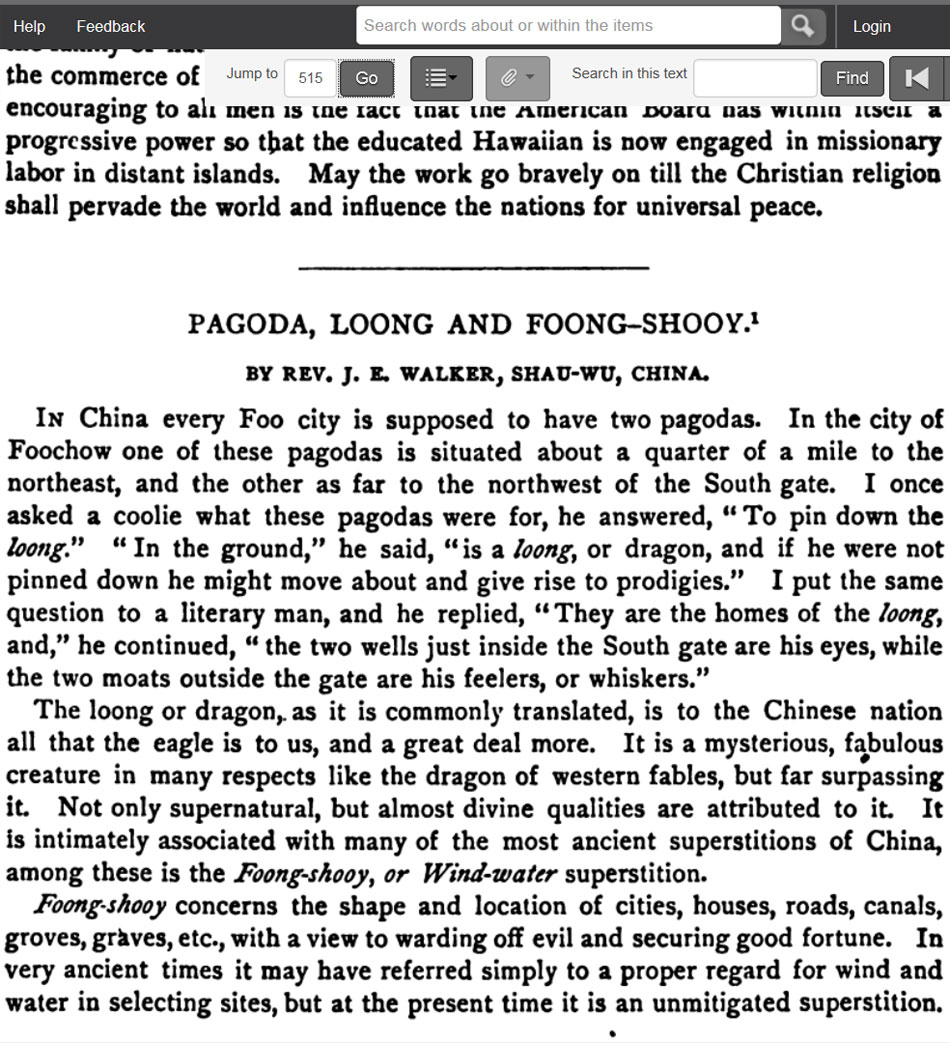
图4-5-2,书籍内页:
The Missionary herald at home and abroad: Volume 78,1882年出版。Google Books
注释: 1,Rev.J.E. Walker: Pagoda, Loong and Foong-Shooy, The Missionary herald at home and abroad: Volume 78, 1882, page 515, Google Books -------------------------------- 3,1904年,美国报纸载文介绍中国龙与众不同 1904年,美国俄克拉荷马州的一家报纸以 Poor Dragon(可怜的龙)为题,介绍了中国的龙不同于世界上其它地方的杜拉更兽(图4-5-3)[1]。文章说: The dragon is a very much abused beast. In every country in the world but one he is looked upon as a fire-breathing monster that likes nothing better than to eat all the people in a village, set fire to the houses and take a nap, saving the tender young babies and the pretty little girls for dessert. (对 dragon 这种动物存在很多误解。在全世界除了一个国家之外,都把它视为喷火的魔鬼,它对什么都没有兴趣,除了吃掉村子里的所有人,放火烧掉房子,小睡一下,把柔嫩的幼儿和漂亮的小女孩储藏起来以作为餐后甜点。) The one country in tho world where this kind of monster is given credit for his good heart is in China and that is the dragon's home, so they ought to know something about him. (这个在世界上唯一的国家是中国。Dragon(龙)因为其好心而在中国受到尊重。中国是龙的家,所以他们知道它的一些事情。) One day, a mere trifle of 2,800 years ago, so the Chinese legends say, while the Emperor Fu-hsi was walking beside the river Lo, a yellow dragon rose from the water and taught him the art of writing, giving him an alphabet, so that the Chinese could record their history and make out laundry tickets, and for this the Chinese worship the dragon to this day. Even the emperor's throne is still called "the dragon's seat." (中国神话说:有一天,大约两千八百年前,当部落首领伏羲在洛河边行走时,一条黄色的龙从水里出来,教他如何写字,还给了他一个字母表,于是中国人就能够记录他们的历史了,还能够开具洗衣房收据了,就因此,中国人崇拜龙直至今天。甚至皇帝的宝座仍然被称为“龙椅”。) The dragon which is shown here was drawn by the Chinese artist and shows the fabled monster rising amid flames from the river Lo with "the pearl of mystic powers" between its claws. (图中的龙是中国艺术家画的,这种虚构的怪物正在从洛河里升起,围绕在火焰之中,它的爪子拿着“神力之珠”。) Of course, there never was a real dragon. It is only a mythical beast, the first stories of which probably arose from descriptions handed down from father to son of those ancient days when the earth was the home of the dynosaurians and other terrible creatures with no less terrible names. (当然,世界上没有真实的龙。龙只是神话动物,最初的故事可能来自古人的口口相传,那时地球的主人还是恐龙或其它名字的恐怖程度不亚于恐龙的可怕生物。) |
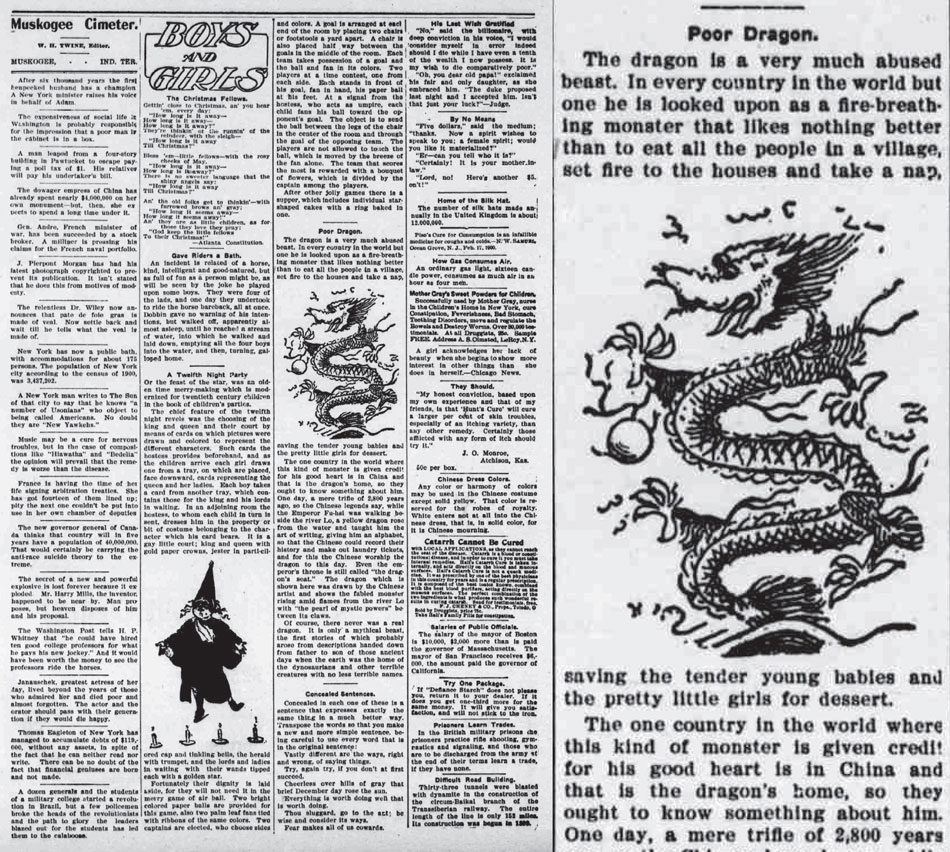
图4-5-3,报纸截图:The Muskogee cimeter.,1904年12月15日。右为局部放大。
这篇文章虽然很短,但可以看出作者对中国龙还是比较了解的。有趣的是,他把中国的龙和中国人会写字、中国人开具洗衣房收据这两件事情联系起来了,显然是因为那时中国人在美国开设了很多洗衣房,这样写能够把遥远的中国龙和美国人的日常生活联系在一起,美国读者会觉得更加生动亲切。 |

描绘中国人蜂拥而至美国西海岸的漫画(局部),1888年(?)
|
注释: 1,http://chroniclingamerica.loc.gov/lccn/sn83025060/1904-12-15/ed-1/seq-2/ -------------------------------- 4,1923年,中国通海斯指出龙和杜拉更兽存在三大显著差异 1922年,上海的商务印书馆出版了一本英文小册子(全书正文仅六十六页),书名为“The Chinese Dragon,龙”(图4-5-4),指出中国的龙和欧洲的杜拉更兽存在本质的差别。书中写道 [1] : The Chinese conception of the dragon presents a very different creature from that of the nations bordering on the Mediterranean and the Atlantic. (中国人关于龙的概念导致了一种不同的生物,它迥异于地中海和大西洋沿岸的国家对杜拉更兽的描述。) We do not know who first attached the English name "dragon" to the Chinese conception "lung," but it is hardly fair to the Oriental ruler of the sea to be branded with the stigma which accompanies the English designation. (我们不知道谁第一个把英语名称 dragon 附加于中国的“龙”身上,但对于这一东方的海洋统治者来说,把和这个英语名称联系在一起的污名贴在它身上,是很不公平的。) Since the recent revolution, several devout Westerners have been heard to express their great satisfaction that the dragon flag has now forever disappeared. A misconception of the use of the word "dragon" had caused the speakers to confuse the evil monster mentioned in the book of Revelation with the animal so highly revered by the Chinese. ((辛亥)革命之后,听到有几个虔诚的西方人表示他们对龙旗从此永远消失感到很欣慰。使用 dragon 一词(称呼龙)引起的错误认识导致这些西方人把《启示录》中描绘的邪恶怪物,和中国人高度崇敬的动物相混淆了。) |

图4-5-4,书籍封面:The Chinese Dragon,龙。

《龙》一书的版权页
|
The dragon of the Chinese differs from the generally accepted Western idea in three striking particulars: in appearance, in disposition, and in the regard in whcih it is held. (中国的龙和西方人熟悉的杜拉更兽有三个显著的不同之处:外形,性情,人们对它们的态度。) In appearance, the European conception varies but slightly from the creature which was its probable prototype, save for the addition of a pair of wings. The Chinese species is developed to a higher degree. The latter has a more massive head from which protrude two branching horns. This species, with the single exception of the Chih Lung, or Li Lung, has no wings but travels from place to place upon the clouds. (在外形上,西方的杜拉更兽虽然外形各异,但偏离它们可能的原型的外形不多,而且都有一对翅膀。中国的龙进化到了一个比较高的层次。它有比较大的头部,上面长有两支分叉的角。除了螭龙(或璃龙)[2],龙没有翅膀,但仍然能够在云上从一个地方前往另一地方。) A still greater difference between the two varieties exists in the matter of disposition. The European dragon is usually portrayed as a cruel monster, the personification of all that is evil, and the enemy of man. Christian art represents it as opposed to law, harmony, and progress and symbolic of sin and paganism. In this allegorical sense it is painted in struggles with St. George, St. Michael, and St. Sylvester, who personified Christianity and enlightenment. Saints and martyrs are pictured in the process of crushing the dragon beneath their feet. The Chinese dragon, on the other hand, is in this respect very nearly its antithesis. It is a beneficent creature, a friend to man. It brings the rain which produces the crops that in turn supply his food. (中国龙和西方杜拉更兽更大的差异在它们的性情方面。欧洲的杜拉更兽通常被描绘成一个残忍的怪物,是所有邪恶事物的化身,人类的敌人。在基督教艺术中,杜拉更兽是和法律、和谐与进步对立的,是罪恶与异教的象征。在这种比喻意义上,它被画成圣乔治、圣迈克尔和圣西尔维斯特的搏斗对象,而他们是基督教和文明的象征。在描绘这些搏斗的绘画作品中,杜拉更兽被圣徒和殉道者踩在脚下,并被他们消灭。然而,中国的龙在这方面几乎截然相反。它是一种行善的生物,人类的朋友。它带来的雨水生产的农作物,是人类的食物来源。) |

图4-5-5,The Chinese Dragon 一书的插图:Dragon Gateway(龙门)。
作者和创作年代不详。
|
The third point of distinction between the two dragons lies in the esteem in which it is held. The Western species was a horrible, loathesome creature, shunned and dreaded by all mortals, while the Asiatic dragon is held in reverence and even worshiped by the Chinese. This creature is in fact so highly revered that one of the most sacred titles which was bestowed upon the emperors was "The True Dragon." (中国龙和西方杜拉更兽的第三点区别在于人们对它们的态度。西方杜拉更兽是一个可怕的、令人厌恶的生物,被人们回避和畏惧,而亚洲的龙受到崇敬,甚至被中国人所崇拜。事实上,这个生物被高度尊崇,以至于皇帝被授予的最神圣的头衔是“真龙”[3]。) 此书作者是海斯(Luther Newton Hayes),其父亲是从美国来华的传教士。他于1883年出生于中国苏州,把中文当作母语使用(The
author was born in China and spoke the language as a native)。在美国读完大学、获得硕士学位(M.A.)之后,他回到中国,在基督教青年会(YMCA)工作了二十多年。他还担任了孙中山的孙子(the
prime minister's grandson)的英语家庭教师(English tutor)。 |

图4-5-6,Luther Newton Hayes。
作者对中西方文化都比较了解,因此比较清楚地认识到中国的龙和西方的杜拉更兽在外表和内涵上都存在很大的差异。此书导言的作者是 Fang F. Sec(邝富灼,中国翻译家、英语专家),他写道:“This little volume should be of value to all who are interested in China. This account of the dragon will not only be of value to foreigners, but it will also be such to Chinese.”(这本小书将对所有对中国感兴趣的人有价值。对龙的这一阐述不仅对外国人有价值,对中国人同样如此。) 在该书出版后近一个世纪的今天,很多中国人仍然坚定地主张把中国的龙译为 dragon,这些朋友不妨去仔细地读一下海斯先生的著作。如果找不到这本老书的话 [4],告诉大家一个好消息:为了纪念这本书出版九十周年,2012年这本书第四次印刷出版。新版书的书评(Review)这样写道:“This is a wonderful reissue! The Chinese Dragon is an unpretentious, yet inspired study of dragon lore and imagery, produced at a time when most in the West had not fully recognized the profound importance of China’s cultural traditions. [5]”(这是一次精彩的再版!《龙》这本书对龙的研究是朴实无华的,但又能给人带来启迪。作者写这本书时,西方绝大多数人还没有完全认识到中国文化传统的深切的重要价值。) 具有讽刺意味的是,在这本书于近百年后再版时,轮到中国的绝大多数知识精英“没有完全认识到中国文化传统的深切的重要价值”了。 |

第一版出版九十周年后的新版,2012年
|
注释: 1,L. Newton Hayes, The Chinese Dragon,龙,商务印书馆,上海,1923年。北京大学图书馆影印本,第40至42页。 2,笔者根据发音将“Chih Lung, or Li Lung”译为“螭龙(或璃龙)”,不知是否符合作者原意。中国人一般认为在中国的龙里面,只有应龙有翅膀。 3,中国人一般称皇帝为“真龙天子”。 4,笔者在华东师范大学图书馆通过馆际互借,从北京大学图书馆借得该书影印本。 5,John Espy: Yale University Library Manuscripts and Archives, Preliminary Guide to the Luther Newton Hayes Papers, June 1998, New Haven, Connecticut, http://drs.library.yale.edu:8083/fedora/get/mssa:ms.1285/PDF -------------------------------- 5,1931年,牛津教授苏慧廉建议为龙另取一专用名 1931年2月12日,牛津大学汉语教授 William Edward Soothill(中文名“苏慧廉”)牧师在英国皇家亚洲文化协会(Royal Asiatic Society)做了一场报告,他说:[1] ……. Again, in China, it is always beneficent, while the dragon of the west, for the most part, has been considered as maleficent, injuring the people, stealing princesses, and calling forth the heroism of, say, a St. George, for its destruction. (……。另一方面,在中国,龙总是行善的,而西方的杜拉更兽在大部分地区被认为是有害的,伤害人民,偷走公主,使英雄们例如圣乔治去杀死它们。) So different are the two conceptions that it would almost seem wiser to call them by different names, adopting the Chinese name Lung for their national benefactor. That the Lung is so considered is evident from the rejoicing evinced at the Dragon festival at the first full moon of the year, when immense sinuous dragons are carried about with enthusiasm, every one by a dozen or so brightly clad young men. (这两种东西是如此的不同,为它们取不同的名字显然是明智的,可以用来自中文的名字 Lung 称呼这个国家的施惠者。在每年第一个满月日举行的元宵节上,人们表现出来的喜悦证明龙被中国人认为是吉祥的。在元宵节,人们充满热情地举着巨大的蜿蜒的龙,每条龙由十来个穿着鲜亮衣服的小伙子举着。) 苏慧廉教授和中国有多年来往,写过几本关于中国的书,涉及宗教、历史和文学。他建立了温州话的拼音写法(Wenchow romanized
system)。他还建立了教堂、医院、大学和学校,并在 Imperial University of Shansi Province 做了四年校长。该校中文名为“山西大学堂”,是今日山西大学等的前身。 |
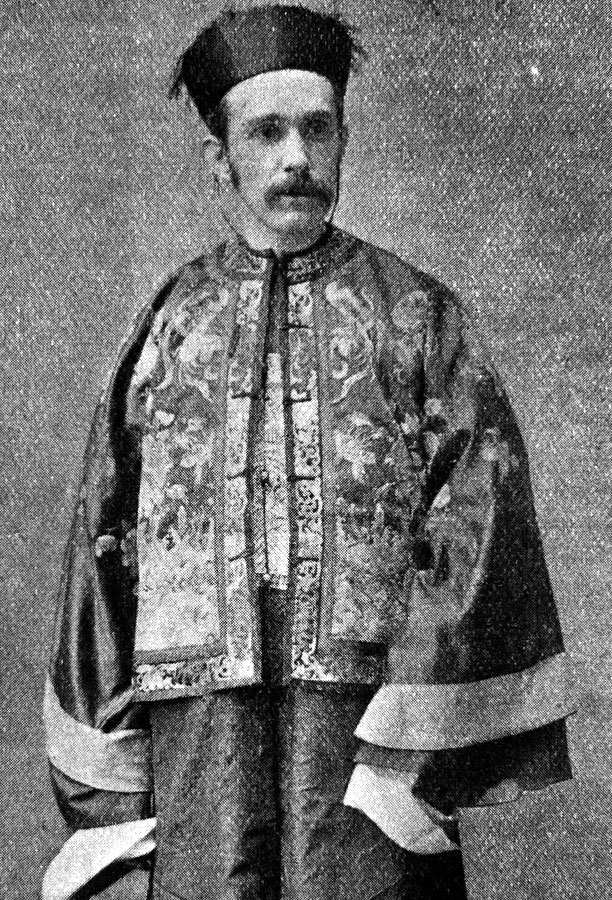
看来西方人只要了解了中国龙,都会认识到它和西方的杜拉更兽不是一回事,应该另取一名。这不是因为这些西方人特别高明,而是因为这是常识。很多中国人反对重新翻译龙,不是因为愚昧,而是因为忘记了常识。 注释: 1,The Dragon of China, Journal of the Royal Asiatic Society, Volume 63, Issue 2, April 1931, pages 498 to 599, http://journals.cambridge.org/ -------------------------------- 6,1981年,翻译学泰斗奈达叮嘱注意事项 奈达(Eugene A. Nida)是一位美国语言学家,是现代翻译学的创立者之一。他提出了“动态对等”(Dynamic Equivalence)等翻译理论。他在《圣经》翻译和跨文化翻译等领域声名显赫。搜索发现,他至少在两本著作中讨论了 dragon 一词的翻译问题。一本是 Meaning Across Cultures(跨文化的语义,1981年出版),另一本是 Greek-English Lexicon of the New Testament(新约圣经希腊语 - 英语字典,1988年出版)。 在第一本书中,他写道: .... But most problems that invole cultural differences are much more complex: they involve conflicting values attached to the same objects. For example, in the Orient the "dragon" is not regarded as a threatening animal, symblic of overwhelming evil power, as in the Book of Revelation; rather, the dragon suggests good luck and fortune. Is one to change the symbol of "dragon" to fit Oriental concepts? [1] (……。但是绝大多数涉及文化差异的问题都要复杂得多:在同一个对象上,会存在着完全对立的价值观。例如,和《启示录》里说的不同,在东方,dragon(龙)没有被视为有威胁的动物,也没有被视为强大的、压倒一切的邪恶力量的象征;相反,dragon(龙)意味着好运。有人想过要改变
dragon 这一符号的象征意义,去适应东方人关于龙的理解吗?) |
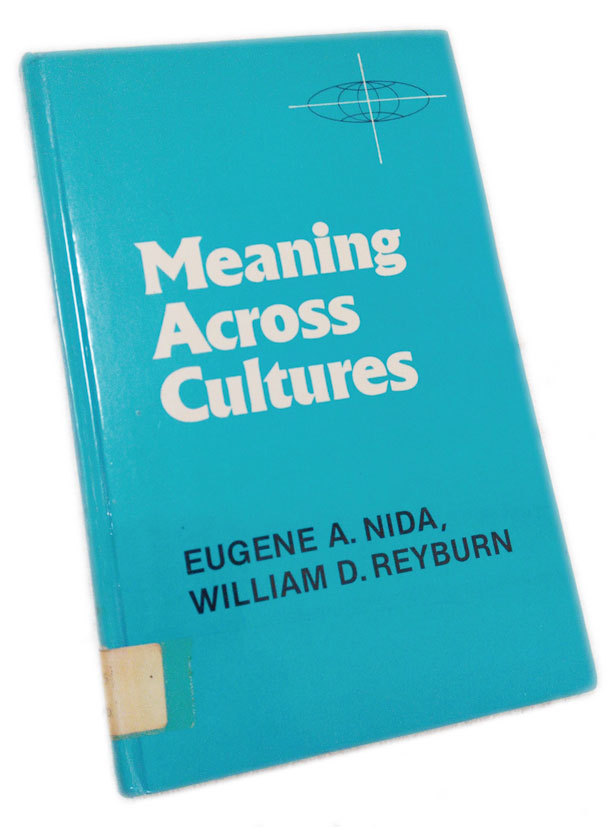
Book Across Oceans.(笑)。*
奈达去世后的第三天,一位罗马尼亚语言学家发布了一篇博文悼念他。文中摘录了第二本书中的几段话。这是奈达对如何翻译 dragon 一词的建议: In most areas of the world a term for dragon would imply something fearsome, but in certain parts of the Orient the dragon is regarded as the symbol of prosperity and good fortune, and it is necessary, therefore, in translating into certain languages in the Orient to employ (1) a somewhat different expression, for example, 'terrible reptile' or 'fearsome snake' or (2) a marginal note which will explain the differences in connotation. [2] (在世界上绝大多数地方,dragon 一词意味着某种可怕的东西,但是在东方一些地方,它被认为是繁荣和好运的象征。因此,在把这个词译为东方的某些语言时,应该采取以下两种方法:(1)使用某些不同的表达方式,例如将其译为“令人恐怖的爬行动物”或“可怕的蛇”;或(2)做一个旁注,解释其内涵的不同。) 中国翻译学界对奈达非常熟悉。1993年,上海外语教育出版社出版了他的著作 Language, Culture and Translating(语言、文化与翻译);1998年,内蒙古大学出版社出版了该书的中译本。2006年,上海外语教育出版社出版了他的专集《语言与文化:翻译中的语境》,内容包括(1)Language, Culture and Translating一书;(2)根据他在中国十所大学的讲学内容整理而成的文集 Contexts in Translating(翻译中的语境);(3)他同一位记者和三位教授的谈话或信件。 奈达在中国翻译学界的影响非常大,很多学术论文和著作言必称奈达。但是他的中国学生们却很少遵从恩师的教诲,在翻译 dragon 一词时,依然将其译为“龙”。例如南华大学外国语学院研究生史传龙和该院教授贾德江根据奈达的观点,指出龙和
dragon 互译“未体现翻译本质和完成翻译任务”,但又建议把中国龙译为 Sino-dragon 或 Chinese dragon,把 dragon
译为“西方龙”。[3] |

图4-5-8,Eugene A. Nida。
注释: 1,Eugene A. Nida, William D. Reyburn: Meaning Across Cultures, Orbis Books, 1981, page 2. 2,https://vaisamar.wordpress.com/2011/08/28/ 3,史传龙,贾德江:中国“龙”和西方“dragon”之文化差异与翻译,南华大学学报(社会科学版),第八卷第三期,2007年6月。www.cnki.com.cn * 该书为笔者从英国邮购而来,故有此戏说。 --------------------------- 7,2000年,新西兰新闻人介绍符号“龙”的象征意义在东西方的差异 Jack Tresidder(杰克 · 特里锡德)做过记者和新闻编辑等工作。他的著作 Symbols and Their Meanings(符号及其意义)介绍了古往今来一千多种符号的象征意义。在谈到龙和杜拉更兽时,他说:“龙(DRAGON)这种爬行动物非常古老,可以追溯到中生代时期,因此人们的想象力也必须回到七千万年前才能创造出龙的形象。龙在远东地区一般都具有比较美好的象征含义,而在西方则是恶的代表,因此龙的象征含义比较复杂。”[1] |
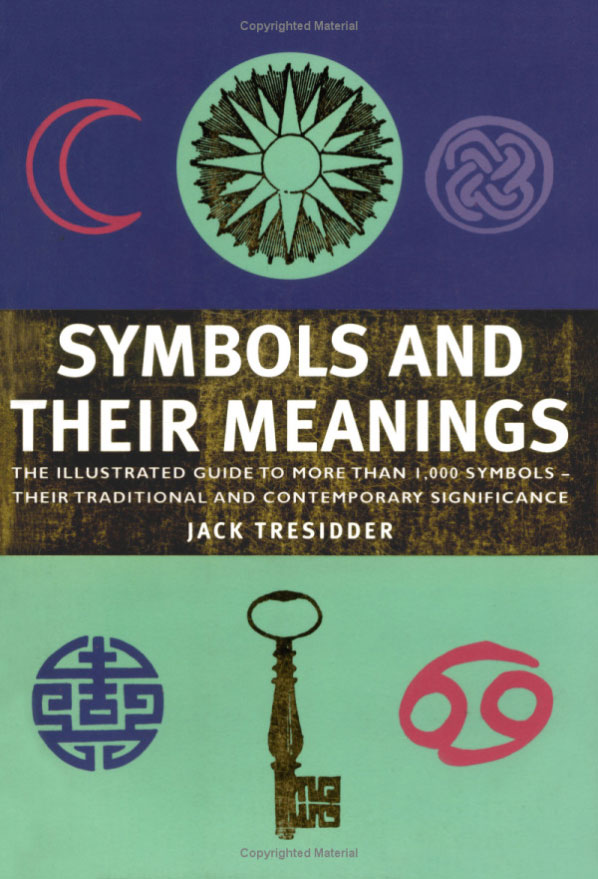
注释: 1,杰克·特里锡德:象征之旅(译者:石毅,刘珩),纸莎图文馆,2001年,第54页,http://max.book118.com --------------------------------------- 8,2012年,德国小伙子裴德思四处奔忙为龙正名 Thorsten Pattberg是一个德国人,男,1977年生,在中国、日本和美国学习和研究东方文化多年,他有一个中文名字“裴德思”。他在 2012年龙年年初写了一篇文章:Long into the West's dragon business [1],刊登在 China Daily(中国日报)上。 笔者在网上没有找到该文的中文版本,只能自己选择有关段落翻译出来。裴德思把中国的龙译为long,和英语里的“长”相同,因此一些地方的意思只能靠猜测。若有译错的地方,欢迎指教。 裴德思在文章中写道: Had Siegfried or Beowulf not slain a European dragon but a Chinese long, those heroes would have committed an extraordinary crime. That's because the Chinese long is essentially a force of the good. (如果(欧洲古代英雄)齐格费里德或贝奥武甫杀死的不是欧洲的杜拉更兽,而是中国的龙,这些英雄们就犯下了滔天大罪。这是因为中国的龙代表了好的力量。) |


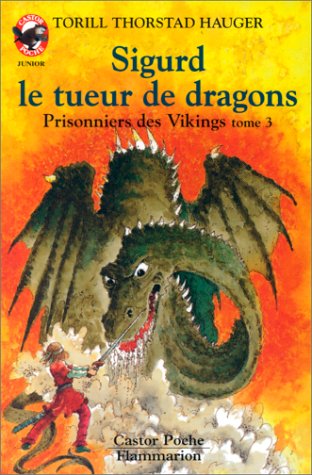
绘画和书籍:齐格费里德杀死杜拉更兽。
The long of China has a history (and etymology) of several thousand years and there are, according to linguist Michael Carr, more than 100 classical ones. Linguistically, it's a tragedy that many Chinese people, I mean the well-educated, English-speaking ones, are so readily prepared to call the long "dragons" - that's like voluntarily abandoning one's culture. (中国的龙有几千年的历史。很多中国人——我指受过良好的教育、会说英语的中国人——欣然接受把龙称为 dragon,这是一场灾难,这等于是自愿地放弃了自己的文化。) A long is a long, maybe even a tianlong, but please, please do not use "dragon". That kind of linguistic imperialism happened to your unique Sichuan xiongmao once, remember? Now it's a Western "panda". (龙就是龙,甚至是天龙,但千万别使用 dragon 这个词。这种语言学帝国主义已经在你们的四川熊猫身上发生过一次了,还记得吗?中国的 xiongmao(熊猫)现在已经成了西方人的 panda。[2]) Western caricaturists love to depict China as the European-style dragon: huge and red (of course), clumsy and pear-bodied, fierce, with tiny wings and a small flame. That clueless beast virtually sits there on the cover of some magazine waiting to be slain by journalist Siegfried Weischenberg, the World Trade Organization or the Barack Obama administration. (西方的漫画家喜欢把中国描绘为欧洲式的杜拉更兽:庞大,红色,笨拙,梨形的肥硕身躯,凶狠,有着细小的翅膀,喷着小火苗。在一些杂志的封面上,这种傻头傻脑的怪兽坐在那里,等待着被新闻界的齐格费里德、世界贸易组织或奥巴马政府杀死。) |


漫画。
|
The truth is, the Chinese long are majestic, divine creatures, snake-bodied (snake is often called a xiaolong (xiao means "little" or "small") and embody happiness, wisdom and virtue. In the West, on the other hand, it's a virtue to slay the dragon for a happy ending. (但实际情况是,中国的龙是威严的、神圣的生物,有蛇一样的身体,象征幸福、智慧和美德。蛇也被中国人称为“小龙”。而在西方,杀死杜拉更兽才是美德,才会得到美满的结局。) As long as Westerners call the Chinese long a "dragon", they will project their own cultural ideas on China. Yet, if they used the correct word, long, it would remind them that they are facing something culturally new. (只要西方人还称中国龙为 dragon,他们就会把自己的文化观念移植到中国身上。然而,如果他们使用正确的词汇 long,这将提醒他们:他们正面对一种文化上的新事物。) You must protect your traditions. This is true for all people. English as a global language is fine but, ideally, only if it accommodates all concepts and all cultures ever produced. (你们一定要保护你们自己的传统。对所有人来说都是这样。只有在英语能够容纳所有文化的所有概念时,它作为一种全球性的语言才是好的。) Embrace the differences and varieties of cultures and value those concepts that matter the most. Protect them. The long is precious. (我们应该容纳文化差异和文化多样性,应该珍惜那些最重要的观念,保护它们。龙是宝贵的。) |

图4-5-10,视频截图:裴德思参加中央电视台节目。
|
“linguistic imperialism”(语言学帝国主义)这个词组真是发聋振聩啊!很多坚持把龙译为 dragon 的中国人该醒醒了,不要自己已经被帝国主义蹂躏了还不知道,还找出种种稀奇古怪、匪夷所思、似是而非的理由为帝国主义者辩护。 该文的缺点是使用 long 作为“龙”的英译,导致很多地方存在歧义。该文的标题“Long into the West's dragon business”笔者就不知道该如何翻译。文中“A long is a long”这句,也可以有无数种理解;只有读完全句:“A long is a long, maybe even a tianlong, but please, please do not use ‘dragon’”,而且只有知道围绕“龙”存在如何翻译之争的人,并知道很多人主张按照拼音字母把“龙”译为 long 的人,才能猜出第一和第二两个 long 可能是指“龙”。 当然,这不能怪人家德国人,应该怪中国的学术界,这么简单的问题还无法定论,使得外国人为保险起见,使用了拼音字母来做音译,而这种译法和英文常用词 long 撞衫,结果出现了歧义。 裴德思参加了经中国国务院批准设立的“中华思想文化术语传播工程”的学术委员会,但是该工程于2017年5月发布的四百条中华思想文化术语的诠释与英译方案中,龙仍然被译为dragon [3]。看来他的建议没有被采纳。 |
|
注释: 2,panda 原用于称呼小熊猫(也被称为 red panda),而大熊猫是中国所独有,所以裴德思认为将其译为 panda 不妥。 (黄佶,2019年6月9日摘自《译龙风云》) (返回顶部) |
返回首页 《译龙风云——文化负载词的翻译:争议及研究》全文免费下载 |